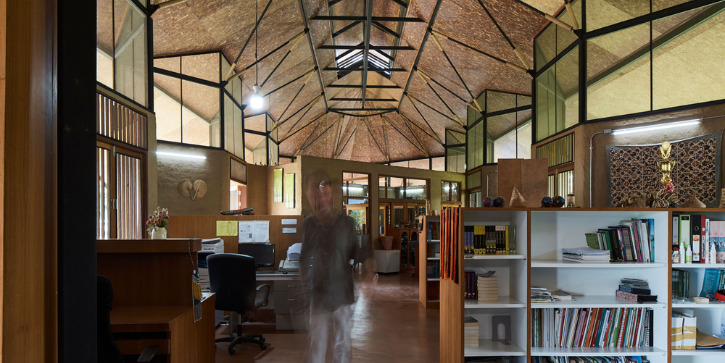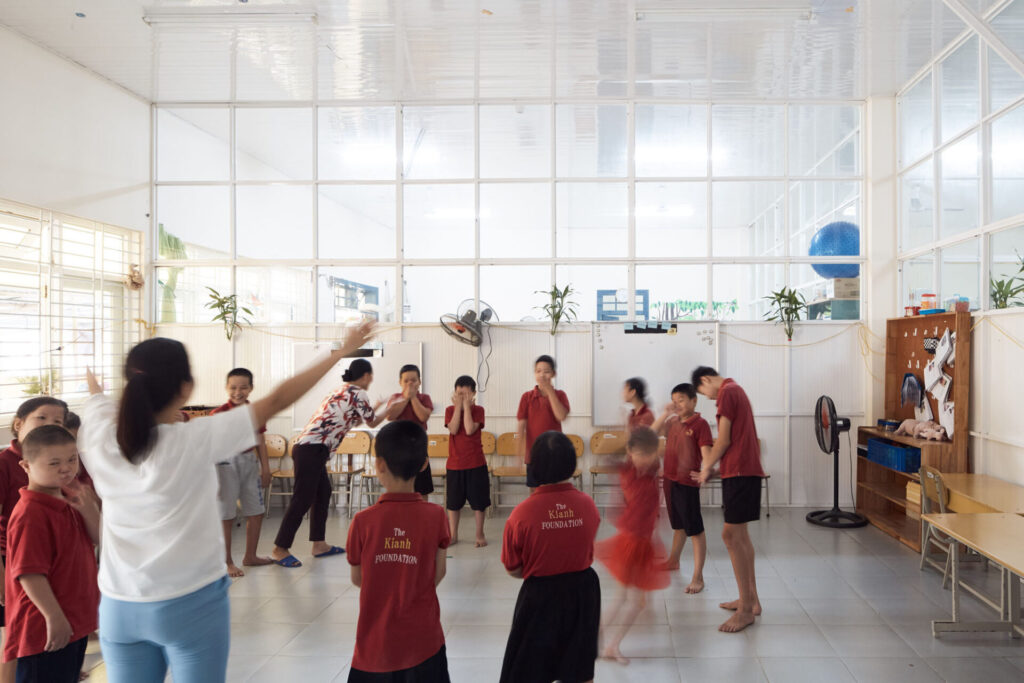Architecture meets philanthropy: transforming lives through design

How can architecture help improve the built environment for people in need? For people living in fragile communities entrenched in social disadvantage or recovering from disaster? These are the questions considered in a new book evaluating the impact of humanitarian architecture.
Design for Fragility, by Esther Charlesworth and John Fien, looks at the emerging field of humanitarian design through profiling 13 built case studies of architects working with vulnerable communities, globally. It’s introduction notes that the number of displaced people around the globe fleeing conflict and climate crises is now 100 million – up to 14 million alone as a result of the war in Ukraine, according to the UN. However, the amount of urban planners and architects trained to work after disasters is exceedingly low. The book offers a study into this fascinating nascent field that is now beginning to expand in the face of such profound need.
“Historically, architects rarely had a seat at the table in disaster recovery discussions with development agencies. There was still a perception that architects didn’t need to be part of that picture – that, rightly or wrongly, it was beyond their remit or they were too expensive. But architects can play a much more holistic role and use their skills in building community resilience before, during and after crises. So thankfully that old perception is now changing,” says Esther.
Esther has been a part of that change. She is founding director of the not-for-profit organisation Architects Without Frontiers (AWF), which she established 25 years ago following her experience of working in Mostar in the aftermath of the 1990s Balkans conflict. A number of similar organisations had started around the world and in 2004 several of them created the global umbrella body Architecture Sans Frontières International. AWF’s belief is that architecture can be an ethical tool for social change.
She has also founded the Master of Disaster, Design and Development program degree at RMIT, where she is a professor in the School of Architecture and Urban Design. Architects from AWF have so far facilitated the design and construction of 60 health, education and community projects across three continents. A number of these are featured in Design for Fragility, along with a raft of other architecture agencies also working on a humanitarian basis.
Esther says that the field started really developing after the Boxing Day tsunami in Southeast Asia in 2004, and Design for Fragility is a follow-up to her 2014 book: Humanitarian Architecture, which looked at the work of 15 different designers. “I’m interested in architects who are running mainstream architecture firms but devoting considerable amounts of their time to doing pro bono projects. There’s the MASS group in the US who are probably now one of the most successful practices in the US model of architecture serving society. They’re doing for-profit work and non-profit, but it’s no longer ‘after hours’. It’s mainstream,” says Esther.
The 13 diverse projects in Esther’s new book each had a particular design challenge of fragility to overcome. They range from an orphanage for girls in Iran, a culturally sensitive accommodation facility for people with acquired brain injuries in northern Queensland, a fire-resilient new home for a Cobargo family who lost theirs in the Black Summer fires to a women’s cultural centre in Fiji.
“These are not ‘one-off’ or token projects,” says Esther. “Rather, they represent critical choices for design collaborations that create long-term social, ecological, health and economic benefits for the disaster or poverty-impacted communities.”
One project that has a particular significance for Esther is the Dien Ban Disability Day Centre in Vietnam. “It’s a building that caters for around 100 kids who live with profound intellectual and physical disabilities from the effects of Agent Orange used in the Vietnam war,” she says. “It was developed with the Kianh Foundation with funding from RMIT, and has created a flow-on impact on a residual community of around 5,000 people. So, it’s not just the project, it’s the programs and the people who we connect with, such as physiotherapists and trainers in this case, because providing a building is just a shell. We try to give life to projects that might not otherwise see the light of day.”
Esther says AWF only works collaboratively with communities who have invited them. The NFP is funded by 11 built environment firms, including architects, landscape architects, quantity surveyors and structural and services engineers. They provide $15,000 a year each to underwrite two AWF paid staff but these firms also provide their services pro bono on the design projects, which are normally brought to them with capital funding in place by development agencies or other NFPs.
But there is now a demand to expand. “As we’re growing bigger, we will be seeking other forms of funding to meet the demand of our current project load. We can’t only rely only on that network partnership model.
“To make that next leap, we’re speaking with the Department of Foreign Affairs and Trade and Australian Infrastructure Financing Facility for the Pacific, so that could be a game changer. And we’ll be looking for other philanthropic partnerships,” says Esther.
“It’s our mission that by 2030, AWF will have designed and delivered 100 projects, and that we’ve got more staff to enable that scaling up. AWF has been a very small operation, but the demands now are very large from communities in need seeking design help. We currently don’t have the internal staff resources to meet with the project demands that people are asking us to do.”
Design for Fragility is available through Routledge and other book suppliers.
